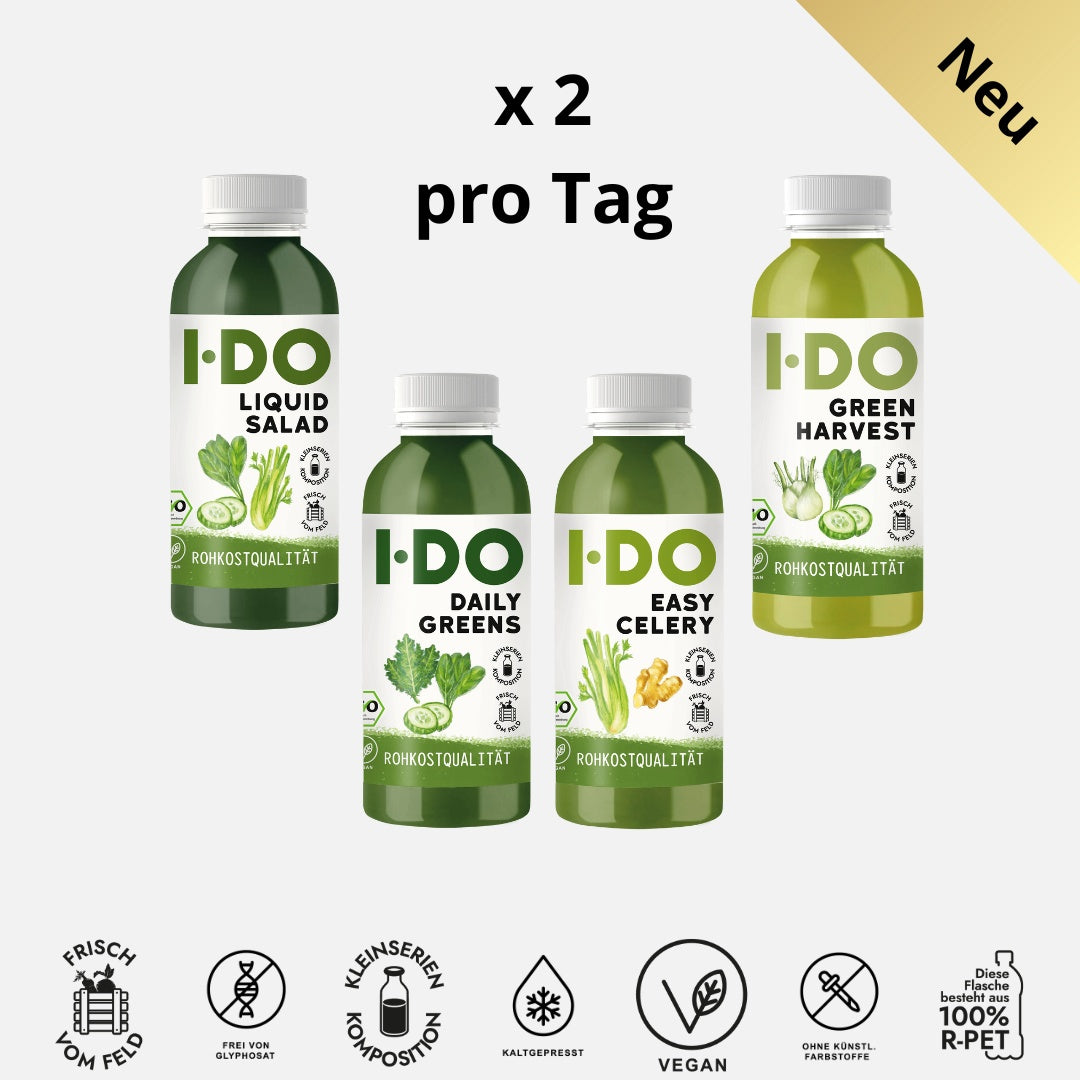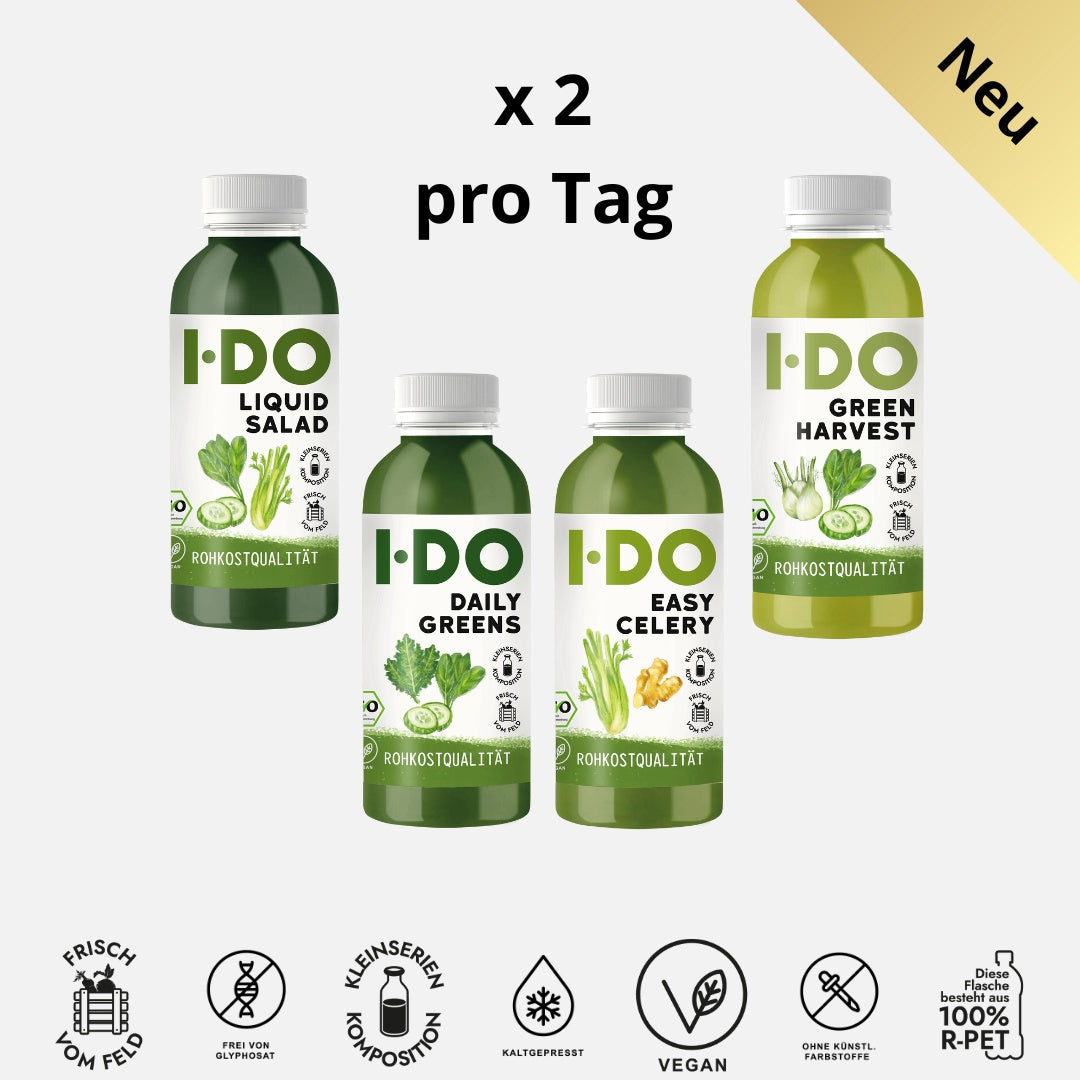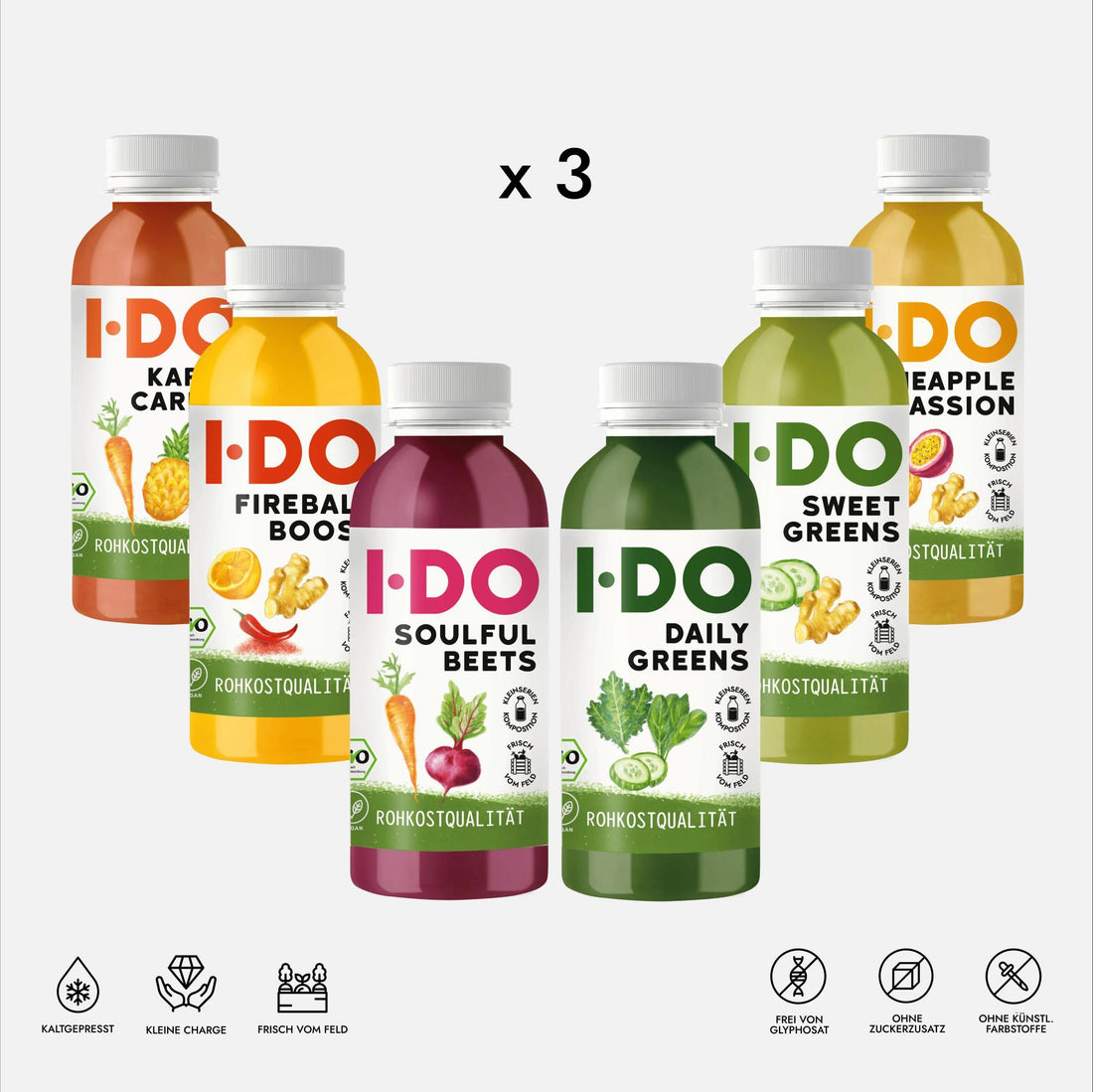Plant diversity for greater balance and well-being
“Eat more colors!” – this statement sounds simple, but it’s full of meaning. The vibrant hues of fruits, vegetables, herbs, and even tea are not only beautiful to look at, they tell a biological story. Behind every color are special plant compounds called flavonoids – natural substances that researchers associate with positive effects on our well-being (1,2).
A colorful diet symbolizes diversity and balance. Regularly eating a variety of plant-based foods provides the body with a wide range of nutrients and phytochemicals that work together to promote balance – both internally and externally.
What are flavonoids and why are they so important for your diet?
Flavonoids belong to the group of secondary plant metabolites – these are bioactive compounds that protect plants from UV radiation, pests, and diseases, among other things. In our bodies, they perform unique functions, such as acting as antioxidants or regulating biochemical processes (1,2).
Studies show that people with a flavonoid-rich diet often perform better in the long term on parameters such as cell protection, metabolic balance, and general well-being. This is not due to a single food, but to variety – the more colorful the plate, the greater the spectrum of flavonoids.
How flavonoids work: protection, balance and healthy cell function
1️⃣ Plant diversity supports the immune system and cell health
A varied, flavonoid-rich diet can help protect cells and support natural regeneration processes. Researchers see the diversity of plant-based foods as a key factor for healthy nutrition and well-being (1).
Each color brings different flavonoids with it:
- Red & Blue: Anthocyanins from berries, red cabbage or cherries
- Yellow & Orange: Flavones from citrus fruits and bell peppers
- Green: Catechins and chlorophyll from spinach, broccoli, or green tea
2️⃣ Flavonoids and healthy aging – nutrition as a long-term investment
High flavonoid intake is associated with better physical and mental function in old age (3).
This shows that nutrition is not only relevant in the short term, but also shapes how vital we remain as we age. A colorful, plant-based diet is a simple, sustainable step towards a healthy lifestyle – without diets, just with variety.
3️⃣ Antioxidant properties: Flavonoids as natural cell protectants
Flavonoids are natural antioxidants. They can help support the balance between free radicals and the body's own defense system. In this way, they contribute naturally to balance and inner stability (2).
Here's how to incorporate more flavonoids into your daily routine 🍎
👉 Eat a colorful diet every day – a simple rule for color diversity
Berries, apples, oranges , broccoli , red cabbage or grapes : The more colorful your plate, the broader the spectrum of flavonoids. (1)
👉 Drink green or black tea
These teas contain natural flavonoids and are a simple, everyday addition to your diet. (1)
👉 Use herbs and legumes regularly
Parsley , thyme, lentils and beans provide valuable plant compounds while also enhancing flavor and variety on the plate. (1,2)
👉 Enjoy dark chocolate or red wine in moderation.
In small amounts, these indulgences can provide additional flavonoids and are ideal for a mindful end to the day. (1,2)
👉 Think long-term – diversity counts more than quantity
Studies show that it's not about individual superfoods, but about variety throughout the week. (1)
Conclusion: A colorful plate for a strong, plant-based diet 🌿
A colorful plate symbolizes joy of life, diversity, and healthy eating. The colors reflect the natural range of phytochemicals that can support your body every day.
Those who regularly eat fruit, vegetables, herbs and plant-based foods of all colors promote balance, cell protection and vitality – in a simple and natural way.
👉 Flavonoids are the silent key to a holistically healthy, plant-based diet, and the simplest rule is: the more colorful your plate, the better for you 🌈
Sources:
(1) Parmenter BH et al. High diversity of dietary flavonoid intake is associated with a lower risk of all-cause mortality and major chronic diseases. Nature Food. 2025;6:668–680. https://www.nature.com/articles/s43016-025-01176-1 (2) Hasnat H et al. Flavonoids: A treasure house of prospective pharmacological potentials. Heliyon. 2024;10(6):e27533. https://www.sciencedirect.com/science/article/pii/S2405844024035643 (3) Bondonno NP et al. Associations between flavonoid-rich foods and flavonoid intakes and incident unhealthy aging outcomes in older United States males and females. At J Clin Nutr. 2025. https://www.sciencedirect.com/science/article/pii/S0002916525000784











